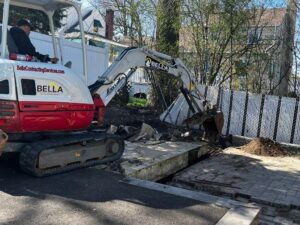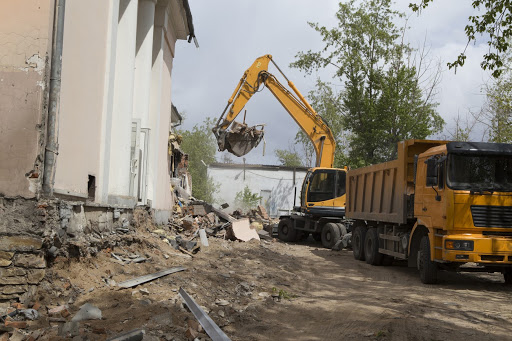
Concrete mixes can be made with recycled concrete aggregate. It offers many advantages. There are many benefits, including structural, economic, and environmental. It can be used for many purposes, including as road base or sub base and concrete overlays. It's also cheaper than new concrete. There are many screening methods that can be used in the recycling process.
Recycled concrete aggregate is becoming more popular in recent years. This technology offers many advantages, including lower environmental impact, lower costs, as well as an environmentally friendly method to dispose of nonbiodegradable trash. It is important to remember the drawbacks of recycling concrete.
The main problem with recycled concrete is its poor mechanical performance. It is less durable than virgin concrete, and has the tendency to crack. A high concentration of recycled aggregate may also affect the durability of a structure. This is particularly true if recycled concrete is combined with fresh aggregate.

Another concern with using recycled concrete is the lack of a suitable source for the aggregate. The construction industry has begun recycling concrete broken down, but natural aggregates are scarce. It is important that the mix is thoroughly refined before it is used in construction. These are some of the most common screening methods to refine recycled concrete.
Concrete's moisture content can be reduced through calcination. This can reduce the concrete's moisture content by up to six percent. It also increases the activity of the powder. This can be done in an electric rotary kiln. This method is commonly used to make recycled concrete harder.
Recycling concrete requires you to screen the aggregate for any combustible elements. Screening the concrete mix using a scalping screener is also necessary. This is often used in conjunction to a deck screening machine. Depending on the equipment used, different materials can be separated.
Another concern is about the cost of material. Although crushed concrete is readily available locally, it is much more expensive than mining new aggregate. Mobile crushers also make it easier to transport. Recycled concrete is also an attractive option to disposing of construction and demolition waste. It is a cost-effective way to conserve resources and avoid tipping fees.

The United States Department of Transportation has done an extensive review of the use of recycled concrete aggregate in America. The project will document the various applications, identify the benefits of the product, and identify barriers to its use. This information will be distributed to STAs and the FHWA Resource Center. It will eventually be used in the development of a comprehensive deployment plan.
The final report will include a national perspective and a summary of the study. It will also include technical guidance for STAs. In addition, it will highlight the success of other STAs. It will include a summary of the review's findings and interviews with STA staff.
FAQ
Can I rent a dumpster?
To help you get rid of the debris from your home remodeling project, you can hire a dumpster. Renting a dumpster to dispose of your trash is a great option.
Do I need to hire an architect?
You may find it easier to hire someone else to complete your renovations if you own the home. However, if you are planning to buy a new home, then hiring an architect or builder will help you make sure that you get exactly what you want.
How can I avoid being taken advantage of when I renovate my house?
To avoid being scammed, it is essential to fully understand the terms of your contract. Before signing any contract, read through the fine print carefully. Do not sign unsigned contracts. Always request a copy of any signed contracts.
How can you remodel a house without spending any money?
These are the steps to follow when renovating your house without spending a lot of money.
-
You should create a budget plan
-
Find out what materials are required
-
Decide where to put them
-
Make a list.
-
How much money do you have?
-
Plan your renovation project
-
Start working on your plans
-
Do some research online
-
Ask family and friends for their help
-
Get creative!
Statistics
- Rather, allot 10% to 15% for a contingency fund to pay for unexpected construction issues. (kiplinger.com)
- According to the National Association of the Remodeling Industry's 2019 remodeling impact report , realtors estimate that homeowners can recover 59% of the cost of a complete kitchen renovation if they sell their home. (bhg.com)
- Most lenders will lend you up to 75% or 80% of the appraised value of your home, but some will go higher. (kiplinger.com)
- On jumbo loans of more than $636,150, you'll be able to borrow up to 80% of the home's completed value. (kiplinger.com)
- They'll usually lend up to 90% of your home's "as-completed" value, but no more than $424,100 in most locales or $636,150 in high-cost areas. (kiplinger.com)
External Links
How To
How do I plan a whole-house remodel?
Planning a whole-house remodel requires planning and research. Before you start your project, here are some things to keep in mind. The first thing to do is decide what kind of home renovation you want. You can choose from a variety of categories, such as kitchen or bathroom, bedroom, living space, or living room. Once you've chosen the category you want, you need to decide how much money to put towards your project. If you are new to working in homes, budget at least $5,000 for each room. If you have some experience, then you might be able to get away with less than this amount.
Once you've determined the amount of money you can spend, you need to decide how large a job you want. You won't be capable of adding a new floor, installing a countertop, or painting the walls if your budget is limited to a small remodel. On the other hand, if you have enough money for a full kitchen renovation, you can probably handle just about anything.
Next, you need to find a contractor who is experienced in the type project that you want. This will guarantee quality results, and it will save you time later. After finding a good contractor, you should start gathering materials and supplies. It depends on how large your project is, you might need to buy everything made from scratch. There are many stores that offer pre-made products so it shouldn't be difficult to find what you need.
Once you've collected all the materials you will need, you can begin to plan. Begin by sketching out a rough plan of where furniture and appliances will be placed. Next, plan the layout. You should leave enough space for electrical outlets and plumbing. Also, try to put the most used areas near the front door so that visitors can easily access them. You can finish your design by choosing colors and finishes. Avoid spending too much on your design by sticking to simple, neutral colors and designs.
Now that your plan is complete, it's time you start building! Before you begin any construction, make sure to verify your local codes. Some cities require permits. Other cities allow homeowners without permits. You will need to first remove all walls and floors that are not required for construction. You will then lay plywood sheets to protect your new flooring. Next, you will nail or screw together pieces wood to create the frame for your cabinets. You will attach doors or windows to the frame.
You'll need to finish a few final touches once you're done. Covering exposed pipes and wires is one example. Plastic sheeting and tape are used to cover exposed wires. You'll also want to hang pictures and mirrors. Keep your work area tidy and clean at all times.
You'll have a functional home that looks amazing and is cost-effective if you follow these steps. Now that you have a basic understanding of how to plan a house remodel, it's time to get started.